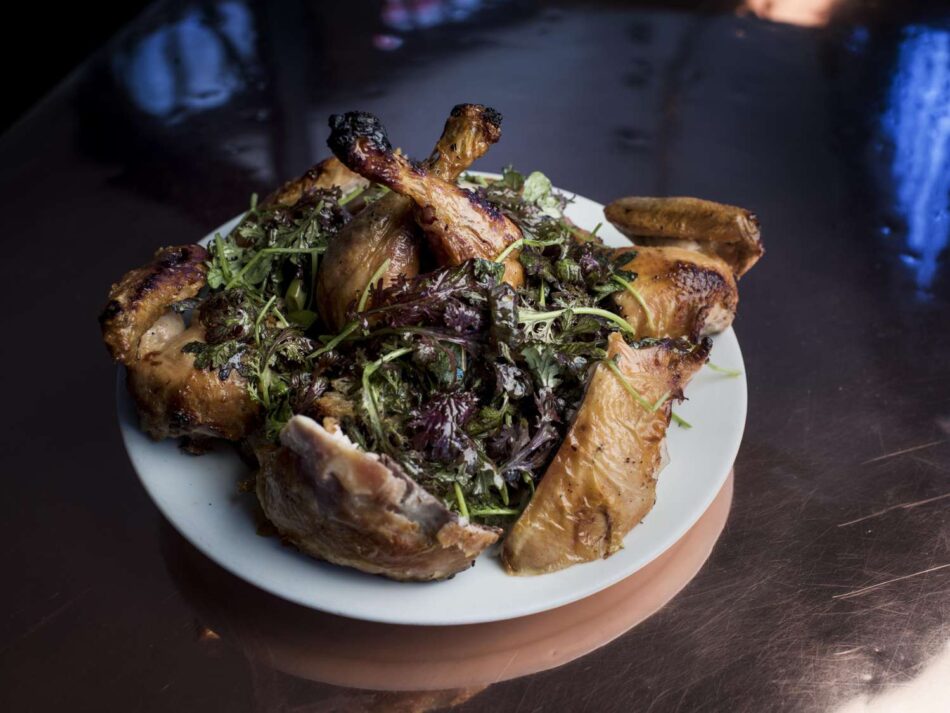“Recipes do not make food taste good; people do,” the late Judy Rodgers wrote in The Zuni Café Cookbook: A Compendium of Recipes and Cooking Lessons from San Francisco’s Beloved Restaurant. Rodgers, who was the chef at Zuni Café from 1987 until she died in 2013, has been one of the most significant influences on the way I eat and cook. Since graduating from culinary school, I have tried to emulate her ethos and style of cooking: simple, thoughtful, brilliantly executed—what the late Los Angeles Times restaurant critic Jonathan Gold described in her obituary as “delicious, but no big deal.”
Though I have eaten at Zuni Café just once in my life, I have pored over the pages of Rodgers’ book and have cooked from it almost religiously over the years. In my kitchen, The Zuni Café Cookbook is my source of truth: how to choose my produce, how to taste and season, and even how to pair certain ingredients. When I’m cooking or grocery shopping, I usually find myself asking, “What would Judy do?”
Over the years, I have recommended The Zuni Café Cookbook to friends and family members who want to become better cooks. The book, as Gold noted in her obituary, is “possibly the greatest, most generous cookbook ever written by an American chef.” Culinary school and professional experience may have equipped me with the skills and muscle memory needed for actual cooking, but I’d argue that Rodgers’ book was what really helped me hone my intuition and palate. Today, it lives on a shelf by my kitchen and dining table, and I reach for it so often that even my two-year-old—inspired by his mother, I suppose—will flip through it occasionally.
It would be impossible to distill her wisdom into several bullet points, but if I had to offer up five essential lessons from her book, it would be these.
Serious Eats / Genevieve Yam
Use All of Your Senses When Cooking
“As you cook, taste constantly, watch closely, smell and touch the ingredients as they change, and then adjust—for your palate, for the weather, for the ingredients, for your equipment,” Rodgers advises. If you don’t cook often, this may sound a little strange. But start paying attention to the minute details when you cook. You’ll find that the aroma of room-temperature oil is very different from that of hot oil that’s ready for frying, and that rapidly bubbling sugar at 234°F (112°C), ready to pour into Italian meringue, sounds very different from sugar slowly melting into a caramel.
Even something as simple as the amount of give a potato has when you pierce it with a knife after roasting the spud for 30 minutes versus 35 minutes can give you a better sense of how your ingredients and equipment work and the many variables that can impact the final result. “This effort, more important than any recipe, rewards even the most experienced cook with insights and surprises,” Rodgers writes. “Recognizing the little differences in ingredients, and learning how to optimize them rather than dilute or ignore them, is a mantra in the kitchen at Zuni.”
Getty Images / Kim Kulish : Contributor
Keep It Simple
You often don’t need more than two or three flavorful components to make a great dish. Many of the restaurant’s most famous recipes consist of just a handful of ingredients: The shaved celery salad with anchovies and Parmigiano-Reggiano; the roast chicken served with a bread salad speckled with dried currants, pine nuts, and handfuls of greens; and eggs fried in a nest of breadcrumbs, a fun twist on a breakfast classic. While there are no superfluous ingredients, what these dishes have in common is the marvelous combination of flavors and textures: There’s almost always a burst of brininess, acidity, or sweetness, or a welcome crunch or velvety smoothness to pull you in for another bite. And when you’re finished, you always wish there was just one more spoonful left.
A Good Sauce Does Wonders
Sometimes, an ingredient is so delicious on its own, you really don’t need much to perk it up. Rodgers pairs tender grilled asparagus with pistachio aïllade, a nutty, garlicky sauce that highlights the vegetable’s sweetness, and recommends serving fried foods or wonderfully salty sardines with sweet, delicate tomato coulis. Her rich gribiche, made with a soft four-minute egg, mustard, shallots, capers, and fresh herbs, is particularly delightful with crisp potatoes or grilled fish and poultry. Keep your pantry stocked with a few basics—an assortment of mustards, oils, vinegars, and nuts—and you’ll be able to make an easy, speedy sauce to pair with whatever side or main you plan on serving.
Salt Is Your Best Friend
At Serious Eats, we have long written about the importance of seasoning: both early on and throughout the cooking process. For me, no other books, besides perhaps Samin Nosrat’s Salt Fat Acid Heat, have quite emphasized the importance of salting like The Zuni Café Cookbook. As a novice cook, I was often confused when chefs told me my cooking needed more salt; Rodgers’ book helped me realize that some foods, especially “plain” ones such as polenta and risotto, simply need a bit more salt than you think. It’s easy to think you’ve done something drastically wrong when your food tastes a little flat, but most of the time, you just need more salt. Salt confidently, and your food will taste drastically better.
Keep an Open Mind
“The best meals are more than a succession of great dishes resulting from a number of great recipes,” Rodgers writes.”They are fashioned with wisdom and experience and are shaded, always, with spontaneity.” You don’t always have to have a plan, and you don’t have to follow a recipe to the tee. As a meticulous planner, I am not often spontaneous. Rodgers’ book, however, is a gentle encouragement to get to know what you like in your own food—and then adjust accordingly. Once you’ve familiarized yourself with the essential techniques and have made something several times, you probably don’t need to stick to a recipe. And that’s okay. In fact, Rodgers welcomes it.
Serious Eats / Genevieve Yam







